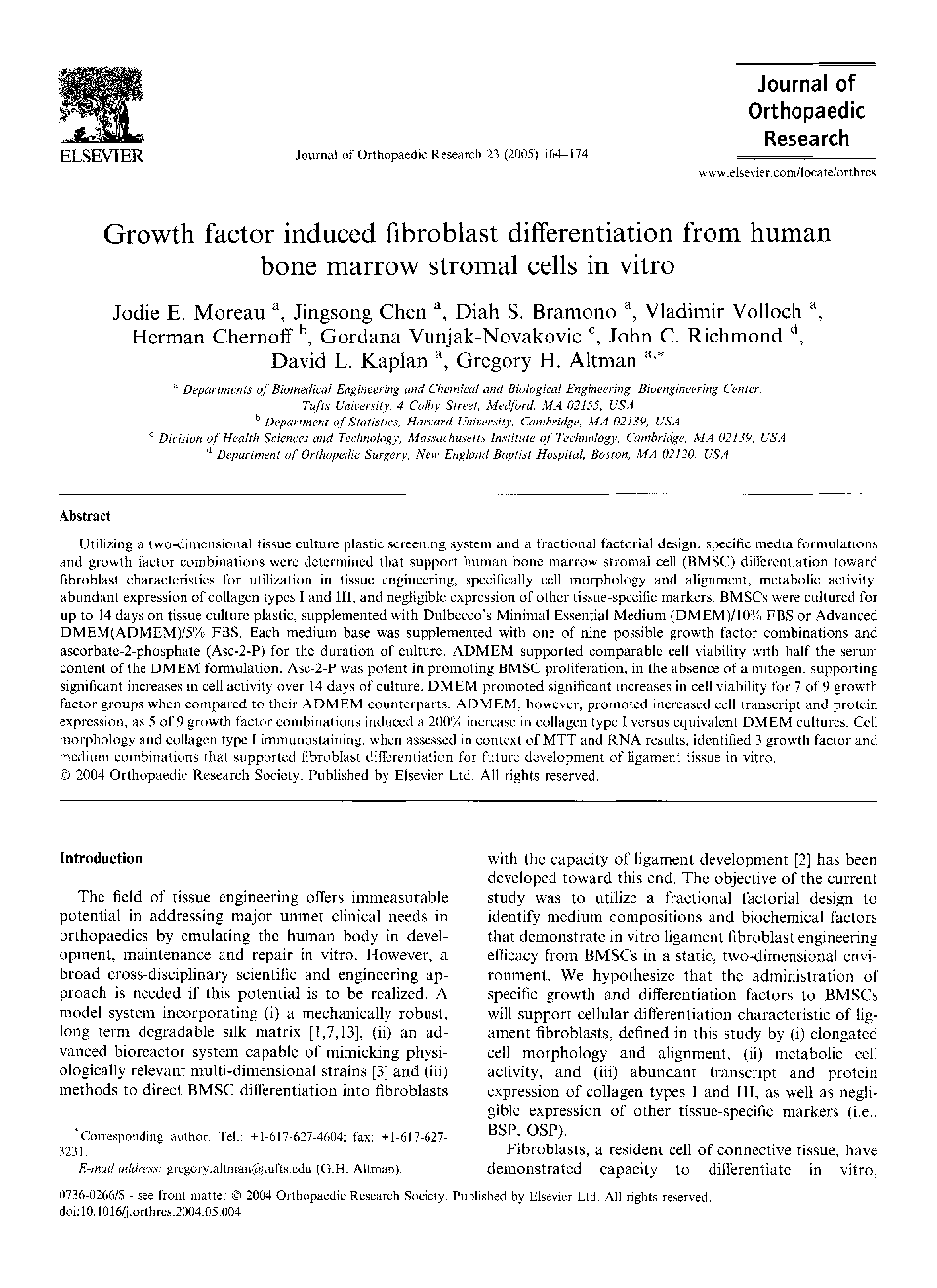| Article ID | Journal | Published Year | Pages | File Type |
|---|---|---|---|---|
| 9354042 | Journal of Orthopaedic Research | 2005 | 11 Pages |
Abstract
Utilizing a two-dimensional tissue culture plastic screening system and a fractional factorial design, specific media formulations and growth factor combinations were determined that support human bone marrow stromal cell (BMSC) differentiation toward fibroblast characteristics for utilization in tissue engineering, specifically cell morphology and alignment, metabolic activity, abundant expression of collagen types I and III, and negligible expression of other tissue-specific markers. BMSCs were cultured for up to 14 days on tissue culture plastic, supplemented with Dulbecco's Minimal Essential Medium (DMEM)/10% FBS or Advanced DMEM(ADMEM)/5% FBS. Each medium base was supplemented with one of nine possible growth factor combinations and ascorbate-2-phosphate (Asc-2-P) for the duration of culture. ADMEM supported comparable cell viability with half the serum content of the DMEM formulation. Asc-2-P was potent in promoting BMSC proliferation, in the absence of a mitogen, supporting significant increases in cell activity over 14 days of culture. DMEM promoted significant increases in cell viability for 7 of 9 growth factor groups when compared to their ADMEM counterparts. ADMEM, however, promoted increased cell transcript and protein expression, as 5 of 9 growth factor combinations induced a 200% increase in collagen type I versus equivalent DMEM cultures. Cell morphology and collagen type I immunostaining, when assessed in context of MTT and RNA results, identified 3 growth factor and medium combinations that supported fibroblast differentiation for future development of ligament tissue in vitro.
Related Topics
Health Sciences
Medicine and Dentistry
Orthopedics, Sports Medicine and Rehabilitation
Authors
Jodie E. Moreau, Jingsong Chen, Diah S. Bramono, Vladimir Volloch, Herman Chernoff, Gordana Vunjak-Novakovic, John C. Richmond, David L. Kaplan, Gregory H. Altman,
